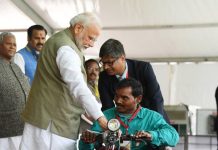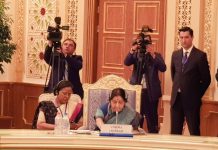
It was meant to be the final nail in the coffin of Raghuram Rajan, governor, Reserve Bank of India (RBI). But when his loyalists raved and ranted, Arun Jaitley, the finance minister who masterminded the move, gave in. Official sources contend that Rajan, as RBIgovernor, may indeed have a veto power in matters related to public debt. Earlier, Jaitley’s plan was to form a separate Public Debt Management Agency (PDMA), which would clip RBI’s wings and make it function as per consensus without giving any veto power to the rbi governor. In effect, Jaitley’s wish was vetoed.
This is not the first or the last time that a finance minister and a central banker were at loggerheads. India is not unique in the sense that it happened here. Globally, in times of economic crises, a showdown between an economic lord and a monetary master is almost inevitable. Not surprisingly, ever since the financial crisis of 2008, rbi governors and finance ministers have waged constant battles against each other. They have both criticised the other for India’s economic ills.
Most people remember the constant fights that the former finance minister, P Chidambaram, had with the then rbi governors YV Reddy and D Subbarao, as also with Rajan, who was appointed during the upa-2 regime. However, the decibel levels of the current Jaitley-Rajan tussle seem to have peaked. A pink paper recently wrote that “Raghuram Rajan seems to be under subtle but steady stack.” It added that “the government’s strategy seems to be to keep the central bank unsettled….” Sources say that after a long time the actions of a hitherto-independent rbi were politicised.
Given this scenario, it is apparent that although Jaitley may have lost the pdma battle against Rajan, the former will strive to win the war over the coming months. Before this government’s tenure is over, the rbi’s responsibilities will be less than what they were a year ago. The setting up of the pdma signals a move to take critical decision-making related to public debt and, of course, interest rates, away from the central bank. Rajan and his supporters will need to be continuously on their toes.
However, the crucial question is: why are Jaitley and Rajan on this warpath? It may also be asked whether the reasons why Chidambaram fought with Reddy were the same as now. Is this merely a matter of clashing egos and personalities or of practical politics and even-tempered economics? More importantly, in times of economic recession or slowdown, can good politics and good economics work in unison to seek common goals?
Shooting for growth
Prime Minister Narendra Modi came to power on the twin promises of growth and development for all the sections and twin dreams of transparency and governance. Jaitley was the man he handpicked to deliver the goods. Despite several policy changes in the past 14 months, growth continues to languish. Although past figures and future estimates have scaled up, critics feel this was because of the change in the growth-calculating formula.
The reality on the ground hasn’t changed. Today, even industrialists such as hdfc’s Deepak Parekh and Bajaj Group’s Rahul Bajaj, as well as foreign ceos, criticise the government for its inability to kickstart investments and put the country on a high growth trajectory. Time is running out for Jaitley and Modi and it is time to deliver on their promises. A study by Bradley Turner found that the focus of the finance ministers globally is generally on “growth rate of real gdp (Gross Domestic Product)”.
Ironically, the study’s title was ‘What causes finance ministers to get fired?’ Coincidentally, in the recent past, there were recurrent rumours that Jaitley may lose his job if he can’t achieve a higher growth rate by the end of this year. Fortunately for him, perhaps, the figures in the recent past were inconsistent — a month of good growth followed by a slide in core sectors followed by fears of monsoon failure followed by studies that the investment cycle may not pick up until 2016.
In contrast, the main task of a central banker is to rein in inflation, or price rise. As TR Santhanakrishnan, chairman and ceo, Financial Technology Business said , it is to lower prices of commodities and, at the same time, initiate a policy that “supports growth without triggering recession”. This is an almost impossible task; it is something that few central bankers have achieved, especially in times of economic crises. Therefore, like Jaitley’s, Rajan’s hands are tied.
Rajan maintains that low inflation is better than high growth, at least temporarily, to improve the lives of the people. The logic is that if people spend less to buy things, they will have more disposable income, which they can use to buy other goods. The interim result: it will trigger demand for goods which, in turn, will force businesspersons to produce more. As demand grows, companies will invest to increase production capacities. End result: high growth rates.
The problem is that Jaitley wants quick results; he wants growth to happen in months. He feels that this is the best panacea for the people, who suffered under the upa-2 regime. Therefore, the finance minister wants the rbi to lower interest rates continuously, which will cajole companies and consumers to borrow more from the banks. The firms will use cheap money to invest in production capacities and the consumers to go on a shopping binge that will hike demand.
Rajan refuses to tinker too much with the interest rates. Instead, he believes in a process that may be slow, but is robust. He fears that unless prices come down, India may fall into a vortex of high growth and high inflation, which may be more dangerous than one of slow growth and low inflation. It is obvious why there is a faceoff between Jaitley and Rajan. It is also clear why Jaitley wishes to take away the interest rate-setting powers of the rbi and shift it to the proposed PDMA.













